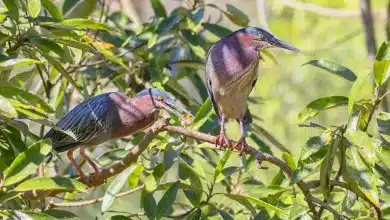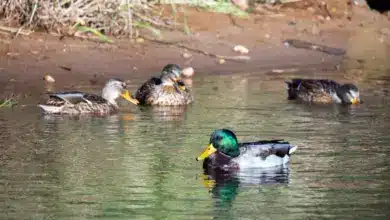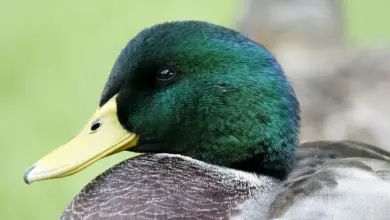American Dippers aka Water Ouzels
The American Dippers (Cinclus mexicanus) – also known as a Water Ouzel – is found in the mountainous regions of Central America and western North America from Panama to Alaska.
It is mostly resident (non-migratory), moving slightly south or to lower elevations if necessary to find food or unfrozen water. This species can even swim upside-down.

Description
The American Dippers measures 16.5 cm in length and weighs on average 46 g.
It is a stocky dark grey bird with a head sometimes tinged with brown, and white feathers on the eyelids cause the eyes to flash white as the bird blinks.
It has long legs and bobs its whole body up and down during pauses as it feeds on the bottom of fast-moving, rocky streams.
This species is equipped with an extra eyelid called a “nictitating membrane” that allows it to see underwater, and scales that close its nostrils when submerged.
Dippers also produce more oil than most birds, which may help keep them warmer when seeking food underwater.
Similar Species
American Dippers most of its habits, it closely resembles its European counterpart, the White-throated Dipper, Cinclus cinclus, which is also sometimes known as a Water Ouzel.
Diet / Feeding
It feeds on aquatic insects and their larvae, including dragonfly nymphs and caddisfly larvae. It may also take tiny fish or tadpoles.
Its habit of diving and walking along the bottom of streams in search of food sometimes makes it the occasional prey of large salmon or other anadromous fish.

Calls / Vocalizations
The song consists of high whistles or trills peee peee pijur pijur repeated a few times. Both sexes of this bird sing year round. It defends a linear territory along streams.
Nesting / Breeding
The American Dippers nest is a globe-shaped structure with a side entrance, close to water, on a rock ledge, river bank, behind a waterfall or under a bridge.
The normal clutch is 2-4 white eggs, incubated solely by the female, which hatch after about 15–17 days, with another 20–25 days to fledging. The male helps to feed the young.





